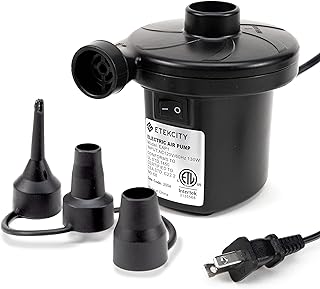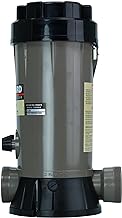5 important factors worth considering when looking for the best inline chlorinators
Choosing the right inline chlorinator is important for keeping your swimming pool clean and healthy. With so many options available, it can be hard to decide, but focusing on key factors can help. Consider how durable, how much chlorinator it can hold, whether it will work with your existing pool equipment, and how easy it is to maintain. These factors will help you choose the best inline chlorinator for your needs and keep your pool sparkling all year long. Making a smart choice will not only help your pool equipment last longer but also make swimming safer and more enjoyable for you and your family.
See our guide to the best inline chlorinators.
Size and capacity of the chlorinator
When looking at how big of a chlorinator to get, it’s important to find one that balances being effective and practical. If you choose a small chlorinator, you might not have enough chlorine in your pool, which can make it more likely to grow algae and bacteria. But if you go with a really big one, you could end up wasting chlorine and spending more money than you need to. It’s best to understand what your pool needs and pick a chlorinator that meets those needs without going overboard.
The size and capacity of the chlorinator also affect how much work you have to do to maintain your pool. A properly sized chlorinator makes sure your pool has enough chlorine and cuts down on how often you need to add more or make adjustments. This means less time doing manual work and more time enjoying a clean and safe pool. What matters most is that the size and capacity of your chlorinator match the size of your pool and how often it’s used, so everything works well without being too much of a hassle.
Compatibility with your pool size and type
When you’re thinking about buying an inline chlorinator for your pool, it’s important to make sure it’s the right size for your pool and works well with the type of pool you have. The size of your pool affects how much water flows through the chlorinator, which impacts how well the chlorine is spread around. If the chlorinator is too big or too small for your pool, it can cause problems like unbalanced water or algae growth.
The type of pool you have, whether it’s above-ground or in-ground, also matters when choosing a chlorinator. Picking one that fits well with your pool type will help it work efficiently and last a long time, keeping your water clear without any extra hassle.
Choosing the right inline chlorinator that matches your pool size and type makes pool maintenance easier in the long run. For larger pools, you’ll need a high-capacity chlorinator to keep up with the chlorine needs of a lot of water. Smaller pools do better with smaller chlorinators that give just the right amount of chlorine without being too strong.
Knowing the details of your pool type helps you choose the best inline chlorinator for your pool, creating a customized solution that fits well into your pool system. By making sure the chlorinator matches your pool, you set yourself up for a good balance between effective chlorination and easy pool care, making your swimming experience enjoyable for years to come.
Type of chlorine used (tablets, sticks, granules)
When choosing which type of chlorine to use in inline chlorinators, you have three options: tablets, sticks, or granules. Each choice has its own advantages and disadvantages that can affect your decision. Tablets are easy to use and slowly dissolve to keep a consistent level of chlorine. However, they can be more costly and leave residue behind. Sticks are inexpensive and simple to replace, but they dissolve slowly which can cause uneven chlorination. Granules quickly spread chlorine and are usually cheaper, but they need to be monitored regularly to keep the levels right.
It’s important to think about your pool’s needs and your preferences when deciding between tablets, sticks, or granules for your inline chlorinator. Whether you care most about convenience, cost, or effectiveness, knowing about each type of chlorine can help you keep your pool clean. The best choice will depend on factors like pool size, how often it’s used, and your personal preferences. By carefully considering the advantages and disadvantages of each chlorine type, you can make a smart choice to keep your pool clean and safe to swim in.
Installation and maintenance requirements
When you are setting up and taking care of inline chlorinators, it’s important to focus on how well they work and how long they will last. The most important part of using chlorine properly is getting it installed correctly so that it sanitizes your pool consistently and efficiently. Having professionals do the installation or following the manufacturer’s instructions carefully can make a big difference in how well the chlorinator works over time. If you don’t keep up with regular maintenance, you might end up having to pay for expensive repairs or a new chlorinator sooner than you expected. To make sure your system lasts as long as possible and works well, it’s crucial to stick to a maintenance schedule that includes cleaning the chlorinator cell, checking chlorine levels, and looking for any damage. Overall, taking good care of your inline chlorinator is key to making sure your pool is a safe and fun place to swim.
Price and cost of replacement parts
When you’re buying inline chlorinators, it’s important to think about the price and cost of replacement parts for maintenance in the long run. While a cheaper option might seem tempting at first, don’t forget about the expenses that come with getting replacement parts later on. Choosing a more expensive inline chlorinator that comes with durable, quality replacement parts could actually save you more money in the future. Making sure that replacement parts are easy to find and reasonably priced can have a big impact on how much it costs to own your chlorinator system overall.
The quality of replacement parts also affects how well your inline chlorinator works and how long it lasts. If you use low-quality or incompatible replacement parts, it could make your chlorinator less efficient and possibly lead to damage that needs expensive repairs. Even though focusing on quality and compatibility might mean spending more money upfront, it can help your inline chlorinator work well and be cost-effective over time. You need to find a balance between the initial cost and the ongoing expenses for replacement parts to make sure your chlorinator system runs smoothly and is affordable in the long term.
Conclusion
In summary, inline chlorinators are a great option for keeping your pool clean and safe. These devices make it easy to add chlorine to your pool, helping you maintain good water quality. Inline chlorinators are simple to use and distribute chlorine evenly, making them a helpful tool for pool owners who want to make pool maintenance easier and enjoy clear water all summer long.


